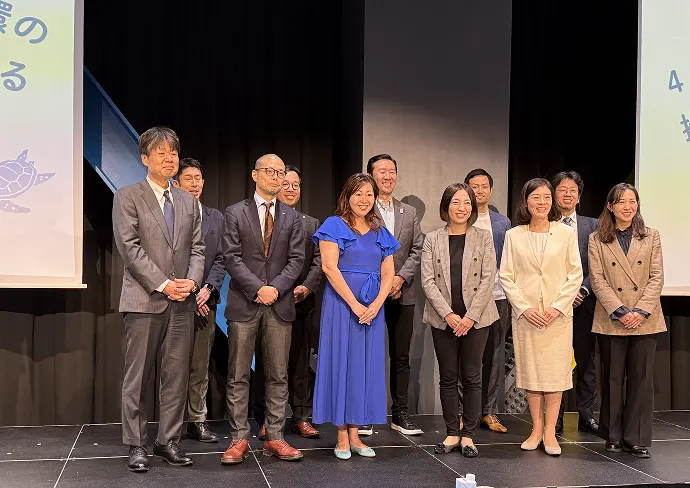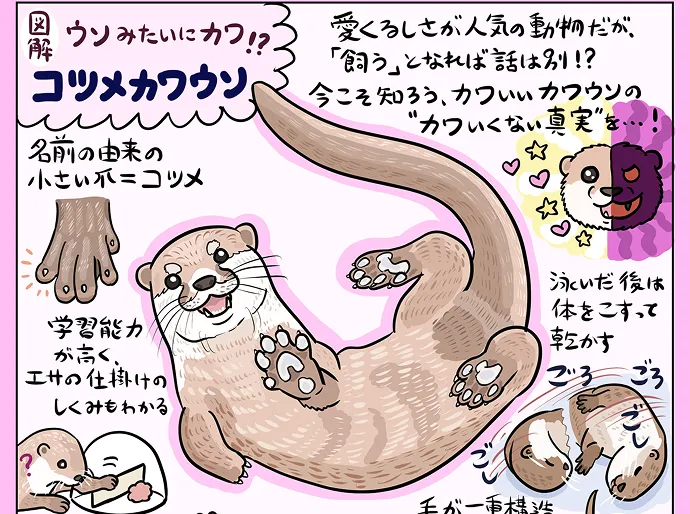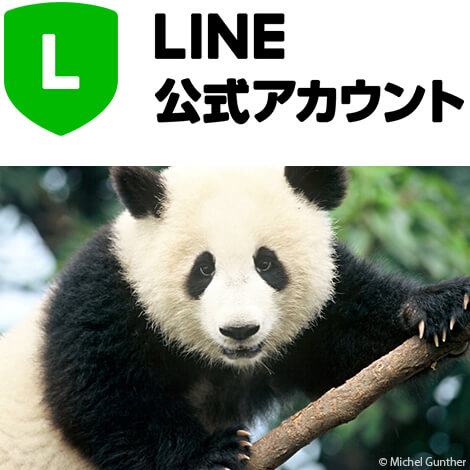2010年ICCAT年次会合に向けたポジションペーパー/東部大西洋と地中海のクロマグロについて(仮訳)
2010/11/12
WWF ポジションペーパー 2010年11月12日
East Atlantic and Mediterranean Bluefin Tuna(仮訳)
フランス、パリにて2010年11月17日から27日に開催される大西洋マグロ類保存委員会(ICCAT)年次会合において、WWFが参加加盟国に対し、以下の要望事項を採択することを求めます。
1:総漁獲可能量(TAC)
科学的勧告に厳密に従い、WWFは、年間のTACが推奨された範囲であるゼロから13,500トンの内、与えられた範囲の中間値以下にすることを要望する。(例6,000トン未満)
2009年11月、大西洋マグロ類保存国際委員会(International Commission for Conservation of Atlantic Tunas、以下ICCAT))は、勧告09-06を採択した。この勧告でICCATは、「2010年の会合において、2022年に最大持続生産 BMSY を少なくとも60%の確率で達成しうるような、3年間(2011年から2013年)の資源回復計画を確立する」とした。この決定を実現するためにICCATは、調査統計常任委員会(Standing Committee on Research & Statistics、以下SCRS)に対し、様々なTACの値と時間枠を用いて資源回復の可能性を示した計画表を提供するよう求めた(いわゆるKOBE2マトリックス)。
2010年10月8日、SCRSはICCATの求めに応じ、大西洋クロマグロの最新の資源評価結果を含めた2010年年次報告書を採択した。これに対しSCRS は、定量化した不確実性を考慮したうえで、2022年に少なくとも60%の確率で資源が回復することを可能にするTACを0から13,500トンの範囲内であるとした(表1参照)。
しかし、SCRSでは、今回の試算において、定量化が困難であった不確実性が多く残っており、そのためICCAT委員会に対し、勧告09-06で検討されたものとは「異なる資源回復可能性基準」(WWFは、これをより高い確率で、と解釈)を設定することを明確に推奨した。
これに加え、欧州連合で、Marine Strategy Framework Directiveによって2020年に最大持続可能生産を達成しうる措置に対する支持を約束している。これは法的義務であり、この点とSCRSの結果を踏まえれば、少なくとも60%の確率で資源が回復するためには、TACは0から6,000トンの範囲で設定されるべきであるとWWFは考える。なお、欧州連合は東部大西洋、地中海における漁獲枠の50%以上を保持している。
表1:年度およびTACレベルごとのSSBF0.1資源回復の可能性
(the probabilities combined the results obtained from the stochastic runs over the 24 scenarios being investigated). (source: 2010 ICCAT SCRS Report; Executive Summary on BFT – Atlantic bluefin tuna)
2:保護区:産卵域の保護
WWFはICCATに対し、SCRSによって認められた6つのクロマグロ産卵域における漁業を完全に禁止する措置の採択を要望する
2008年11月に、ICCATは勧告08-08を採択した。本勧告では、「2010年の(ICCAT)委員会年次会合で、SCRSが保護区の設定を視野に入れ、産卵域を可能な限り正確に識別し、報告する」とした。
ICCAT勧告08-08と2006年のSCRSのアドバイス、そしてその後のクロマグロ産卵親魚の保護を目的とした「(5、6、7月の)地中海における産卵期の禁漁期間設定」という要望全ての整合性を考慮した。
図1: Spawning areas consistent with current scientific knowledge of the main spawning locations (source: 2010 Report of the ICCAT SCRS)
3:過去の過剰生産国に対する措置
WWFは、ICCATが現行の規則であるペイバック義務に則って(勧告08-05)、2007年割当量以上の過剰生産を行った欧州連合(全EU加盟国を代表するICCAT代表団)の2011年、2012年の年間割当量から1,510トンを返上することを、採択するよう強く要望する
4:企業的な大規模漁業(巻き網漁業)に対する措置
WWFは、ICCATに対し、地中海における巻き網漁業の一時完全禁漁と将来地中海で操業する伝統的な漁業の利益を確保するため少量のTACを別途設けることを要望する。
ICCATの地域オブザーバープログラムの報告によると、巻き網漁船で漁獲されたのち、地中海の蓄養生け簀で育つ大西洋クロマグロについては、特にEUにおいて、活動を統制するための明確な規制が設けられ、多大な予算と人員が配置されているにも関わらず、現行の報告および証明制度では十分なトレーサビリティが確保されているとは言い難いとしている。
ICCAT管轄海域の巻き網漁業は、1990年代に劇的に伸長し、さらに日本での刺身需要を満たす商品を生産するために蓄養事業が発展したことで、巻き網漁業による過剰漁獲、無報告生産が横行し、広範な資源状態の悪化を招いた。加えて、ICCAT管轄海域における巻き網漁業は、主に地中海に産卵のため訪れる産卵親魚をもっぱら狙って漁獲している。
原文:WWF POSITION PAPER
Meeting of the International Commission for the Conservation of Atlantic Tunas (ICCAT) Paris, France: 17-27 November 2010
Recommendations:
1. Total Allowable Catch (TAC)
In November 2009, ICCAT adopted Recommendation 09-06 which established that ICCAT “shall establish at its 2010 meeting a three-year recovery plan for 2011-2013 with the goal of achieving BMSY [maximum sustainable yield] through 2022 with at least 60% of probability…”. To guide this decision, ICCAT requested its scientific committee, the Standing Committee on Research and Statistics (SCRS), to provide a strategy table assigning recovery probabilities for the different TAC values and the different time frames (called the Kobe II strategy matrix).
On 8th October 2010, the SCRS adopted its 2010 annual report which includes the result of new stock assessments on Atlantic bluefin tuna, and addresses the request from ICCAT. SCRS recommended a TAC in the range of 0 to 13,500 tonnes per year, to rebuild the stock to BMSY by 2022 with at least 60% probability, accounting for the quantified uncertainties. The Kobe II strategy table shows that the lower the TAC is set below 13,500 t, the higher the rebuilding probability above 60% (see Table 1).
However, the SCRS acknowledges that large “unquantified uncertainties” remain, for which reason it explicitly invites the ICCAT Commission to consider a probability of rebuilding standard “different” from (meaning higher than) that envisaged in [Rec. 09-06].
Additionally, the European Union is legally obliged through its Marine Strategy Framework Directive to support measures achieving recovery to MSY level by as soon as 2020. This legal obligation, according to SCRS results (Kobe II table, Table 1) must lead to the adoption of a TAC within the range of 0 to 6,000 t for a recovery probability of at least 60%. The EU holds more than 50% of the East Atlantic and Mediterranean bluefin tuna TAC.
Strictly following scientific advice, WWF calls for an annual TAC in the lower half of the recommended range (0-13,500 t), i.e. below 6,000 tonnes.
2. Sanctuaries (protection of spawning areas)
In November 2008, ICCAT adopted Recommendation 08-08 which established that “for the annual meeting of the [ICCAT] Commission in 2010, the SCRS shall identify as precisely as possible spawning grounds in view of the creation of sanctuaries”.
Consistent with ICCAT Recommendation 08-05 and the advice from the ICCAT SCRS in 2006 and later years “to close the Mediterranean to fishing during the spawning season [May, June and July]” to protect bluefin tuna spawners – WWF calls on ICCAT to adopt a complete ban on fishing for bluefin tuna in the 6 spawning grounds identified this year by SCRS ICCAT, shown in Figure 1 below.
3. Payback
WWF strongly calls on ICCAT to ensure the enforcement of the rule of law on current payback obligations (Recommendation 08-05), that must result in the deduction of 1,510 tonnes from the annual quotas of the European Union (the one ICCAT contracting party representing all EU Member States) for 2011 and 2012, due to massive overfishing in 2007.
4. Bluefin tuna industrial fishing (purse seining)
According to the preliminary results of the ICCAT Regional Observer Programme, current reporting and documentation schemes covering the fishing and farming chain do not ensure a satisfactory traceability of the Atlantic bluefin tuna caught by purse seine fleets and fattened in Mediterranean farms. This is so despite clear rules and massive resources allocated to control activities, particularly by the EU. There is consensus that the dramatic development of purse seining fleets in the 1990s, fuelled by the equally dramatic development of the tuna fattening industry satisfying the Japanese demand for sashimi, has resulted in strong overfishing, unreporting and extensive deterioration of the stock. Additionally, purse seining focuses exclusively on the catch of bluefin tuna spawners gathering in their breeding grounds in the Mediterranean.
WWF calls on ICCAT to adopt a full suspension of purse seine fishing for bluefin tuna in the Mediterranean, and to allocate any future, small TAC to the exclusive benefit of artisanal activities.
Background:
CITES
In March 2010 a proposal to list Atlantic bluefin tuna in Appendix I of the Convention on International Trade in Endangered Species of Wild Fauna and Flora (CITES) was rejected at the CITES CoP15 in Doha, Qatar. The proposal had been scientifically endorsed by the UN’s Food and Agriculture Organization and the CITES Secretariat, and was supported by the EU.
Payback
In its 2006 meeting in Dubrovnik, Croatia, at the initiative of the EU delegation, ICCAT included a provision in the new bluefin tuna recovery plan (Recommendation 06-05) that lifted the pending payback scheme applying to the overshoot of the quotas during 2005 and 2006, to the benefit of EU and Libyan fleets, which obtained a de facto amnesty on their overfishing of legal quotas during previous years. This created a double standard at the internal EU level regarding the Common Fisheries Policy rules on management of quotas (Council regulation 2371/2002). Therefore, in May 2007, the EU Council and the EU Commission stressed in a joint statement that the decision taken in Dubrovnik “does not constitute a precedent”.
In its 2008 meeting in Marrakech, Morocco, ICCAT addressed the new overages from the EU accounted for by massive overfishing by France in 2007. According to ICCAT Recommendation 08-05, “the payback of the European Community for its overage in 2007 shall be spread over 2009-2012 (500 tonnes in 2009 and 2010; 1,510 t in 2011 and 2012)”.
EU Marine Strategy Framework Directive
According to its Article 1, Directive 2008/56/EC of the European Parliament and the Council established a framework within which EU Member States shall take the necessary measures to achieve or maintain good environmental status in the marine environment by the year 2020 at the latest. According to Article 4, “Member States shall, when implementing their obligations under this Directive, take due account of the fact that marine waters covered by their sovereignty or jurisdiction form an integral part of the following marine regions: … (b) the North-east Atlantic Ocean; (c) the Mediterranean Sea”.
Commission Decision of 1 September 2010 establishes the methodological standards on good environmental status of marine waters, including for Descriptor 3: Populations of all commercially exploited fish and shellfish are within safe biological limits, exhibiting a population age and size distribution that is indicative of a healthy stock. For this descriptor, it is established that Spawning Stock Biomass (SSB) shall be the primary indicator for the reproductive capacity of the stock: “Where an analytical assessment allows the estimation of SSB, the reference value reflecting full reproductive capacity is SSBMSY , i.e. the spawning stock biomass that would achieve MSY under a fishing mortality equal to FMSY.”













